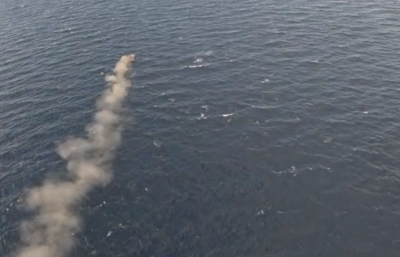The launch date of a new catcher-processor will be decided by lawyers and politicians in Washington, D.C., instead of the shipyard in Washington state.
The most modern and efficient catcher-processor to be built in the Pacific Northwest in 30 years has been grounded by government regulations before she has a chance to slide off the rails. And just as the future of the boat is at stake, the futures of the builder and buyer — and a bevy of jobs at both companies — are riding on the much-anticipated launch of the 264-foot America’s Finest.
Kirkland, Wash.-based Fishermen’s Finest commissioned the boat to be built at Dakota Creek Industries in Anacortes (which last year launched the state-of-the-art longliner Blue North) in 2016 to replace two aging boats.
The name America’s Finest ultimately paints a picture of the problem. Under the rules of the well-known and highly criticized Merchant Marine Act of 1920, better known as the Jones Act, only a certain amount of foreign-made steel plates can be fabricated abroad and used on an American-made, American-flagged vessel. With a cap of 1.5 percent of a ship’s total weight, there’s not much room in the hull for foreign material. That is, foreign-worked material.
What’s not as regulated is where the raw steel comes from. Whole lots of foreign steel can be purchased by an American shipyard to be fabricated here for American-flagged ships. But if the steel originates here and goes overseas for any processing, it gets flagged as foreign-made, which reveals a policy at the heart of the Jones Act. The goal is to keep shipbuilding jobs for U.S. ships in the United States. The source of raw materials was less critical when the act was written almost 100 years ago.
These days, most of us think of Asian product as the typical source of overseas imports. However, the foreign steel Dakota Creek Industries laid down in the fabrication of America’s Finest was converted into product in Holland.
According to reports, America’s Finest is composed of 10 percent foreign steel, a number so much higher than what’s allowed (more than six times the cap of 1.5 percent), one has to wonder how that big a mistake could have happened in the age of computer-designed ships?
And although the European steel has a value of just $275,000 on a $75 million project, it might be enough to disallow the boat from being documented in the United States, which would make it useless to Fishermen’s Finest and has the potential to put the fishing company under.
As covered in this weekend’s Seattle Times, a few major themes are in play in potential outcomes for this story.
If the ship doesn’t launch — and Dakota Creek is bound by contract to provide a ship to Fishermen’s Finest — the futures of both companies are at stake.







